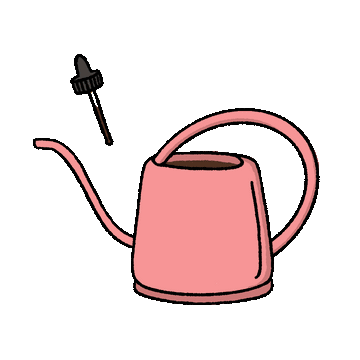Picking a plant can be a little intimidating. You don't want to fork out cash on something that's just going to drop dead as soon as you get home. In fact, alot of our customers ask us to give them "a plant that's not going to die". While we can't make any guarantees (We got it this far, now it's up to you to keep it thriving) we can give you a few easy tips for spotting winners (and spotting duds) in your local nursery.
Picking a winner. Our top Tips for Purchasing a Healthy Plant
1. Pick a quality nursery
The #1 tip is to pick a nursery you trust, even better is one that comes recommended. Plant Shops are everywhere now, so you have the luxury of choice. Big isn't always best, and you should think about visiting smaller, more specialised stores where the staff are able to give both you and the plants the attention that you all require. If you're looking for a store near you, our recommendations can be found here.
2. Stay Fresh
One sign a plant has been sitting on the shelf a little too long is the pot (and label) is looking faded or scuffed. Chances are they're rootbound and probably haven't been fed for a while.
3. Avoid Pests
Obviously. This is here as a simple reminder to check for any cheeky hitchhikers. Look at the plant (under the leaves, along the petiole and in the potting media) for pests or signs of pests. This could include sticky patches, webbing, holes from chewing or bumps along the leaves.
4. Buds over Flowers
Flowering plants look great, but if they're already flowering in the nursery then you've already lost some precious flowering days before you've even gotten the plant home. Look for a plant with buds because this means it's getting ready to flower - perfect for long blooms in your place.
5. Check those Roots
No need to pull the plant out of its pot, but it there are roots visible on top of the potting mix, or coming out the drainage holes, it's a sign the plant is probably rootbound. (Another trick is to give the pot a bit of a squeeze - if it feels tight, the pot is rootbound). This isn't the end of the world, but if you do decide to take it home then you must be willing to put in the work to root-prune before potting up at home. Otherwise, the plant's development could suffer.
6. How's that Foliage?
A plant's foliage will tell you a lot about its health. Colour should be bright and even (variegations aside) and steer clear of plants with yellowing, brown or drooping leaves, as these signs indicate the plant is not in the best state and will require a bit of work to get it back to its best self.
7. Check the Stem
Plant stems should be free of cracks or any scarring. Fresh wounds can invite pests and disease.
8. Weeds
If a plant has weeds growing in it, it suggests a number of things. Firstly, the plant has probably been there a while but secondly, even once you pull those weeds out there may still be seeds in the potting media that you'll be bringing back into your home.
These tips will help you pick the plant with the best chance of thriving in your home, but if you're feeling confident enough there is nothing to say a sick or damaged plant can't improve. As long as you know what you're dealing with and how to remedy it, then power on!



Leave a comment